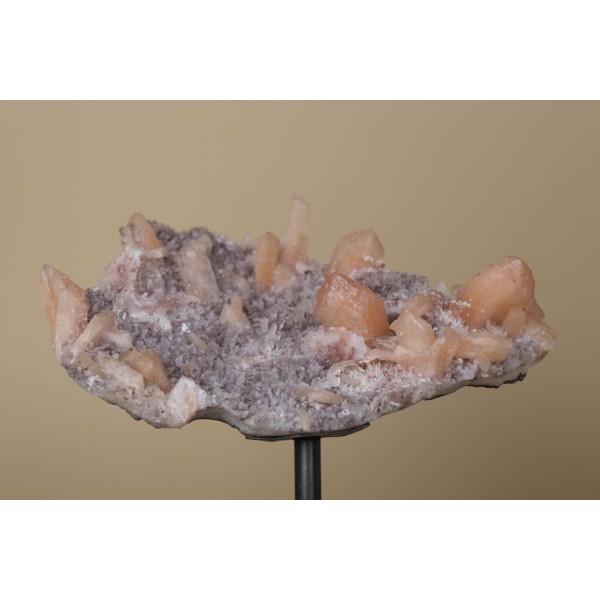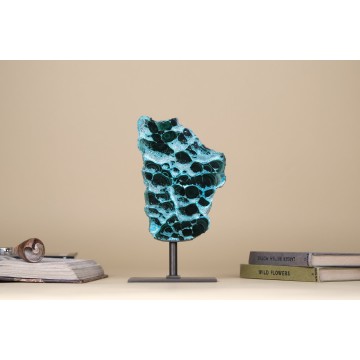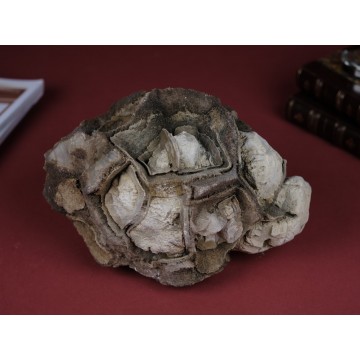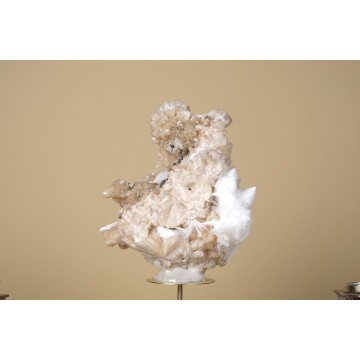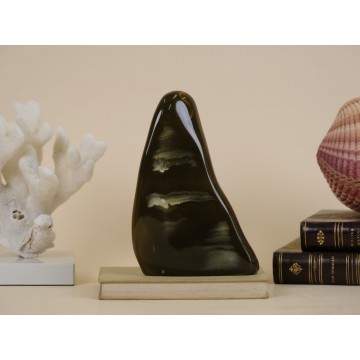Amethyst Crystal Cluster
Amethyst Quartz crystal cluster, featuring generously sized crystals with a captivating and deep lilac color, it showcases the mesmerizing allure of nature's gemstones. Amethyst is a type of quartz, and its color results from the presence of iron and other trace elements. Its stunning hue is often associated with qualities like calmness, spirituality, and inner peace. In metaphysical circles, amethyst is believed to have a soothing and protective energy that can help alleviate stress, enhance intuition, and promote emotional balance. Each crystal within the cluster boasts a stunning and well-defined form, displaying a remarkable aesthetic appeal that is sure to captivate the beholder. The combination of their size, color, and shape creates a truly breathtaking display that exudes elegance and sophistication. Sourced from the renowned amethyst mines of the municipality of Ametista do Sul in the state of Rio Grande do Sul, Brazil, this crystal cluster is a testament to the unparalleled quality and richness of the region's geological treasures.


